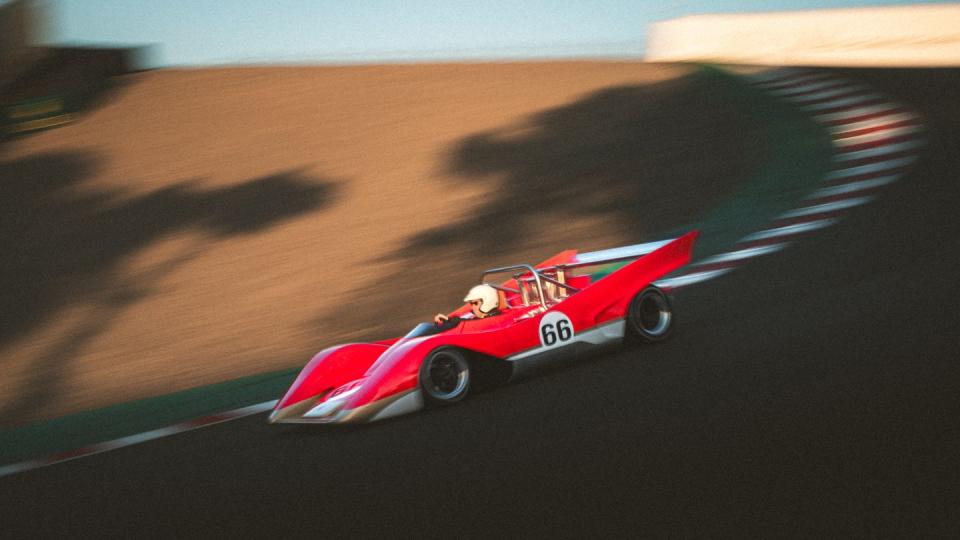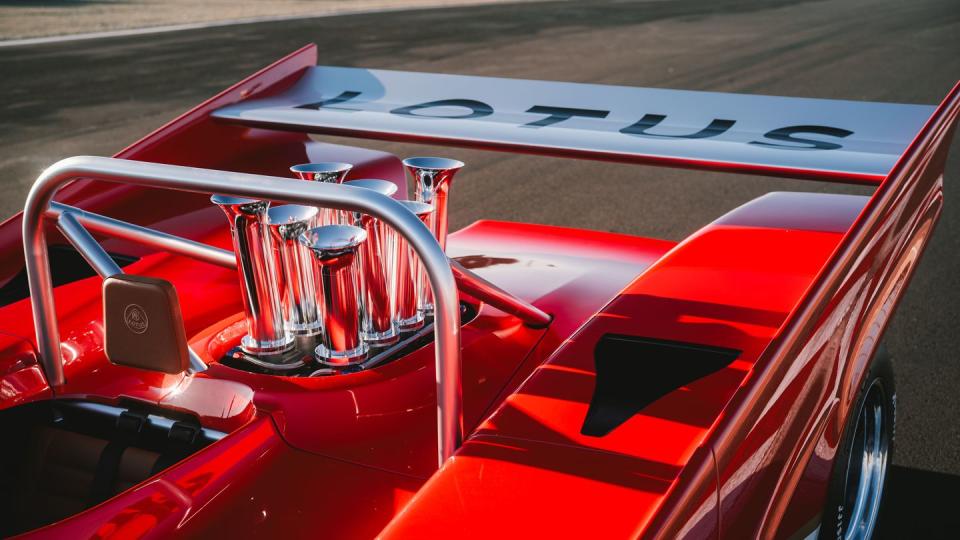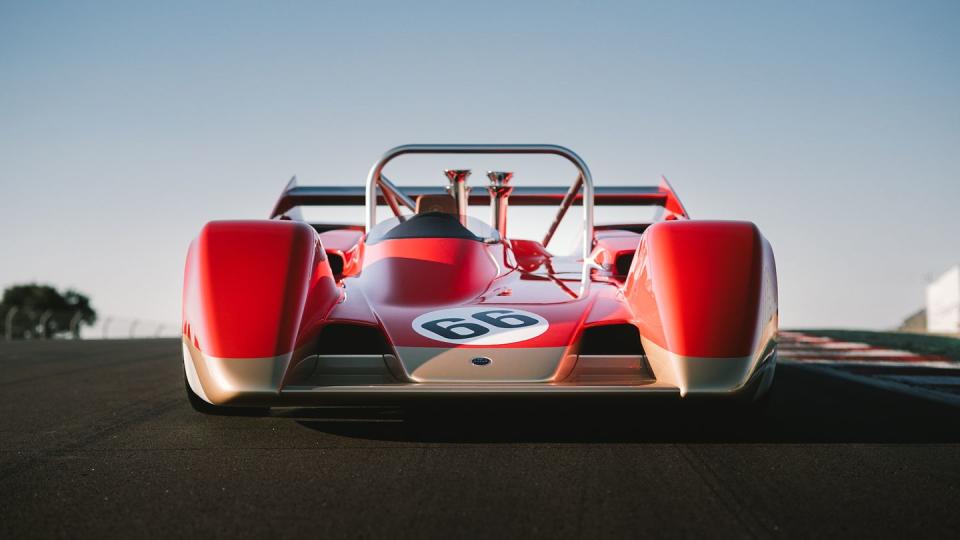Imagine a Lotus Can-Am Car in 1970—Here It Is!

Lotus never entered Can-Am, but it comissioned drawings for a race car that would have competed in the 1970 season, likely with Emerson Fittipaldi at the wheel.
The Type 66 is the car that could have been: 53 years after drawing it, Lotus is building 10 of them, for track-day use only.
Cost is $1.2 million.
Can-Am was arguably one of the greatest racing series ever held. Its largely unrestricted rules meant designers and engineers could construct just about anything with a seatbelt and put it out on the track.
Fans loved it, manufacturers loved it. The greatest names in sports car racing dominated it: McLaren and Porsche, mostly.
But right around the time that McLaren was whoopin’ everybody, Colin Chapman, founder of Lotus, gave it a try. The idea got as far as the drawing board, but Lotus’ domination in another popular series, Formula 1, took precedence.
Lotus said it this way: “With his eyes on the high-profile and commercially lucrative Can-Am Series, Lotus founder Colin Chapman tasked Team Lotus draftsman Geoff Ferris to launch the Type 66 project to evaluate how Lotus design principles could be applied to this exciting category.
“Chapman’s primary focus on Formula 1 meant the innovative project never went beyond technical drawings and scale models. In a fitting tribute to the brand’s illustrious racing pedigree and heritage, Lotus has proudly fulfilled the original vision 53 years after the designer first put pen to paper.”

Had it been built, the Type 66 would have competed in the 1970 Can-Am, a year dominated by Denny Hulme and McLaren.
“The car would have shared many innovative features with our most successful F1 chassis, the Lotus Type 72, which was developed during the same era. These include side-mounted radiators which helped reduce front drag, increase front downforce and channel airflow through and over the car,” said Clive Chapman, son of Colin and keeper of those Type 66 drawings all these years.
“The rear of the car incorporates a distinctive tail section, resembling the Le Mans endurance cars of the period. These features would have boosted its downforce considerably, compared to rivals, aiding high-speed stability and ultimately its lap times. It would have been spectacular, as is the actual Type 66 we see today.”
The Type 66 benefits from the half-century of technical progress since it was first drawn. Using modern CAD and CAM, the team led by Lotus design director Russell Carr, digitized a series of 1/4- and 1/10th-scale drawings supplied by Chapman and created 3D renders to provide an entirely new perspective of the vehicle.

The original sketches were true to Colin Chapman’s early designs, featuring a cockpit enclosure that would reduce drag and improve airflow to the rear wing.
That means they moved the fuel cell inboard, added a sequential transmission, and even included an anti-stall system. The chassis and body are made from carbon fiber. The body benefits from more than 1000 hours of CFD to optimize airflow, resulting in 1760 pounds of downforce at 150 mph.
The engine is a “period-representative” pushrod V8. No brand name was given, but the McLarens of the day had Chevies. That engine makes 830 hp at 8800 rpm. An aluminum forged crank, rods, and pistons mean it can handle the 550 lb-ft of torque.
Like the engine, the chassis is also period correct, with extruded aluminum, bonded joints, and aluminum honeycomb panels throughout. ABS brakes help the driver stay on the track.
All this 1970 authenticity and horsepower doesn’t come cheap. Price is $1.2 million. Lotus says the car will outperform some modern GT3 race cars today. But it does not meet the specs for any series running today. Vintage racers would likely frown on its carbon-fiber bodywork, for instance. Who knows? Start schmoozing race organizers now.
Imagine how much fun it would be driving this Lotus Type 66 around Laguna Seca or wherever your home track is? Share your thoughts on what could have been in the comments below.

 Yahoo Autos
Yahoo Autos 